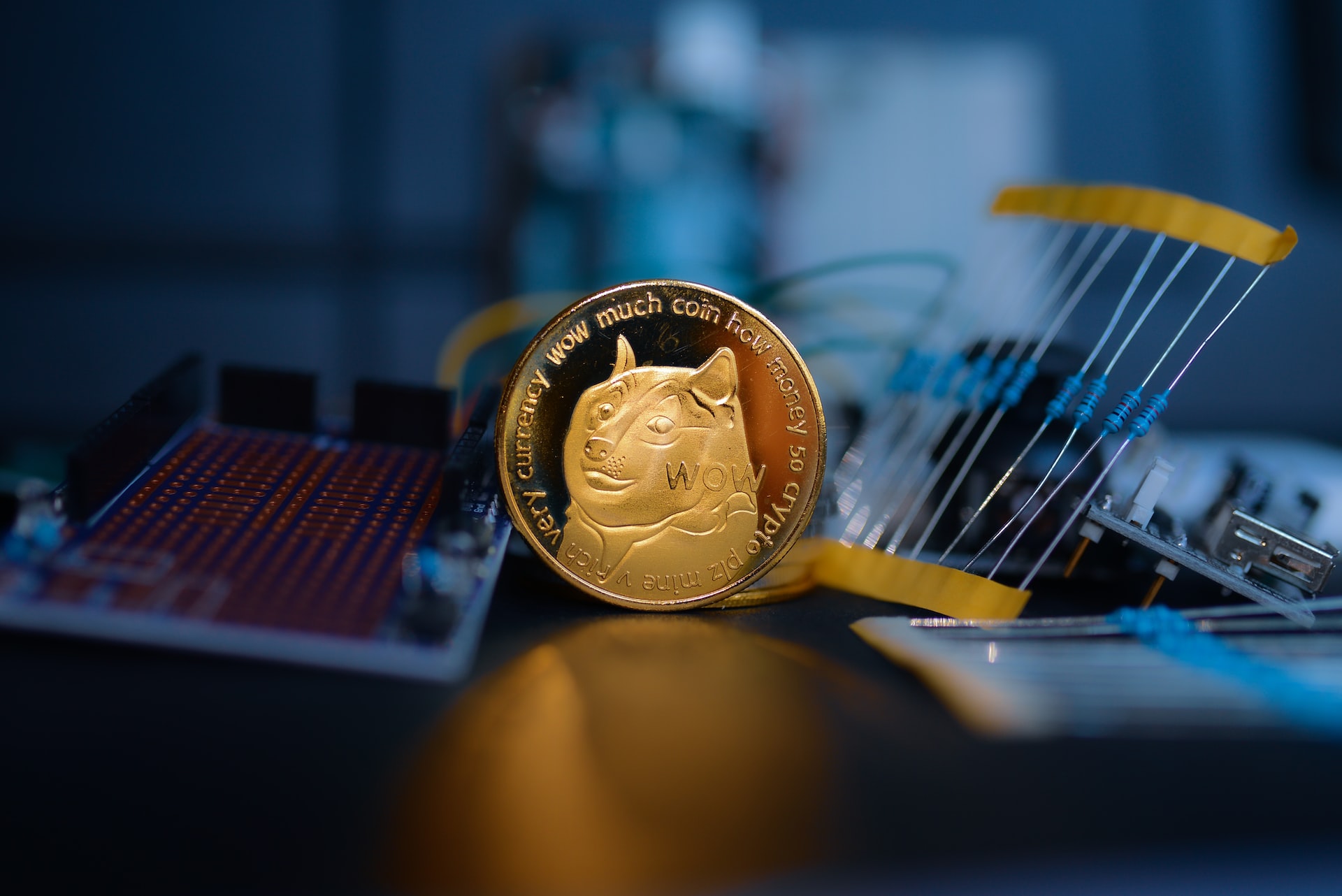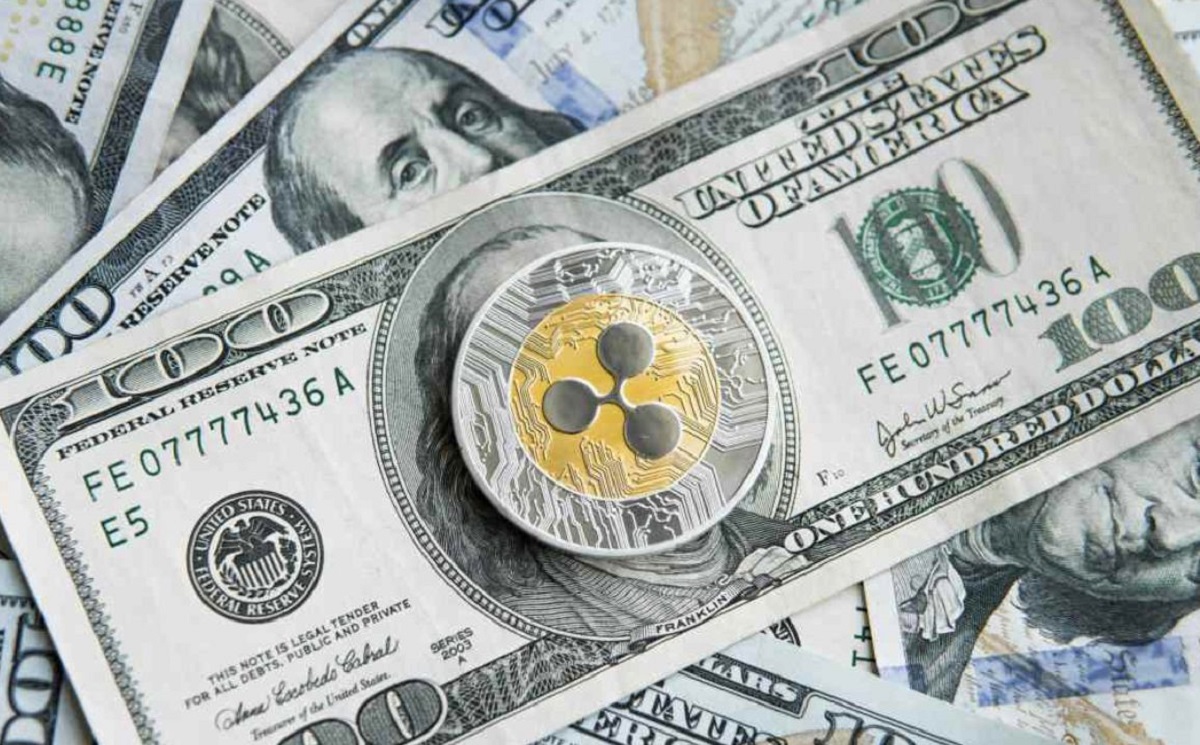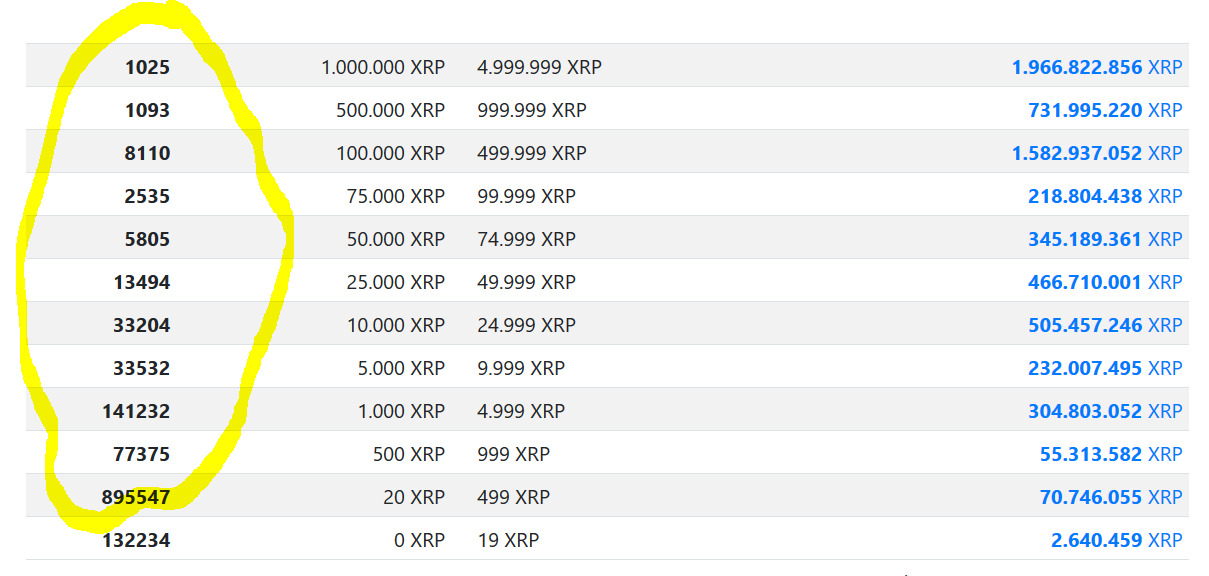Introduction
Welcome to the exciting world of cryptocurrency! As digital currencies continue to gain popularity, more and more people are looking to buy and invest in cryptocurrencies, including in Australia. Buying cryptocurrency may seem daunting at first, but with the right knowledge and resources, you can navigate this new digital landscape with confidence.
In this article, we will guide you through the process of buying cryptocurrency in Australia. We will explore the basics of cryptocurrency, how to choose the right cryptocurrency to invest in, selecting a cryptocurrency exchange, setting up a wallet, purchasing cryptocurrency, and securing your investment. By the end of this guide, you will have a solid understanding of how to get started with buying cryptocurrency in Australia.
Cryptocurrency, such as Bitcoin and Ethereum, is a type of digital or virtual currency that uses cryptography for secure financial transactions, control the creation of new units, and verify the transfer of assets. Unlike traditional fiat currencies, cryptocurrencies are decentralized and operate on a technology called blockchain.
Before diving into the world of cryptocurrency, it’s important to thoroughly research and understand the specific cryptocurrency you are interested in. Each cryptocurrency has unique features, use cases, and potential for growth or volatility. By conducting proper research, you can make informed decisions about which cryptocurrency aligns with your investment goals and risk tolerance.
Once you have identified the cryptocurrency you want to invest in, the next step is to choose a reputable cryptocurrency exchange. A cryptocurrency exchange is a platform that allows you to buy, sell, and trade cryptocurrencies. It’s crucial to select an exchange that is secure, reliable, and compliant with regulations. Take the time to compare different exchanges and consider factors such as fees, user interface, customer support, and available trading pairs.
After selecting an exchange, you will need to set up a cryptocurrency wallet. A wallet is a digital storage solution that allows you to securely store your cryptocurrency. There are different types of wallets, including web-based wallets, software wallets, hardware wallets, and paper wallets. Each type offers varying levels of security and convenience. It’s essential to choose a wallet that meets your security needs while providing a user-friendly experience.
With your wallet set up, you are now ready to purchase cryptocurrency. The process may vary depending on the exchange you are using, but typically involves depositing fiat currency into your exchange account and then using that balance to buy the cryptocurrency of your choice. It’s important to be aware of any fees associated with buying and selling cryptocurrency, as well as any verification requirements.
Once you have purchased your cryptocurrency, it’s crucial to store and secure it properly. Cryptocurrency theft and hacking are risks in the digital world, so taking steps to protect your investment is essential. Consider transferring your cryptocurrency from the exchange to your personal wallet for added security. Additionally, enable two-factor authentication and keep your wallet’s private keys safe.
Finally, as with any investment, it’s important to monitor and manage your cryptocurrency holdings. Stay informed about market trends, news, and regulatory changes that may impact the value of your investment. Regularly review your portfolio and consider diversification strategies to minimize risks and maximize potential gains.
Now that you have a basic understanding of how to buy cryptocurrency in Australia, it’s time to dive deeper into each step of the process. In the following sections, we will provide detailed information and guidance to help you navigate the world of cryptocurrency investment successfully.
Understanding Cryptocurrency
Before diving into buying cryptocurrency, it’s essential to have a solid understanding of what cryptocurrency is and how it works. Cryptocurrency is a digital or virtual currency that uses cryptography for secure financial transactions, control the creation of new units, and verify the transfer of assets. Unlike traditional fiat currencies, such as the Australian dollar, cryptocurrencies operate on a decentralized technology called blockchain.
The blockchain is a distributed ledger that records all transactions made with a particular cryptocurrency. It consists of blocks, which contain a set of transactions, that are linked together chronologically, forming a chain. This technology ensures transparency, security, and immutability of transactions, as it requires consensus from a network of computers to validate and add new transactions to the blockchain.
One of the key features of cryptocurrency is its decentralization. Traditional currencies are regulated and controlled by central banks and governments. In contrast, cryptocurrencies are not governed by a central authority, making them immune to government interference and manipulation. This decentralization also enables faster, cheaper, and more efficient cross-border transactions, as cryptocurrencies eliminate the need for intermediaries, such as banks or payment processors.
Bitcoin, which was the first cryptocurrency created, is often referred to as digital gold. Like gold, Bitcoin is limited in supply, with a maximum cap of 21 million coins. This scarcity, coupled with increasing demand, has contributed to its value appreciation over time. Other cryptocurrencies, such as Ethereum, Ripple, and Litecoin, have also gained traction and offer different features and use cases.
Cryptocurrencies can serve various purposes. Some are designed as digital currencies, aiming to be used in everyday transactions. Others act as utility tokens, providing access to specific services or platforms. Additionally, there are cryptocurrencies that function as investment assets, offering potential returns based on market speculation and adoption.
It’s crucial to note that investing or buying cryptocurrency comes with risks. The cryptocurrency market can be highly volatile, with prices fluctuating wildly within short periods. This volatility can present opportunities for significant gains but also carries the risk of substantial losses. It’s important to proceed with caution and only invest what you can afford to lose.
To stay informed about cryptocurrency trends, news, and developments, it’s beneficial to join online communities, subscribe to reputable cryptocurrency news outlets, and follow influential figures in the industry. Understanding the dynamics of the cryptocurrency market and staying updated can help you make more informed investment decisions.
Now that you have a basic understanding of cryptocurrency, the next step is to research and choose the right cryptocurrency to invest in. In the following section, we will discuss the factors to consider when evaluating different cryptocurrencies and their potential for growth.
Researching and Choosing the Right Cryptocurrency
When it comes to investing in cryptocurrency, thorough research and analysis are crucial for making informed decisions. With thousands of cryptocurrencies available in the market, it’s essential to evaluate each option carefully before investing your hard-earned money. Here are some factors to consider when researching and choosing the right cryptocurrency:
- Use Case: Understand the specific purpose or problem that the cryptocurrency aims to solve. Some cryptocurrencies focus on improving cross-border payments, while others are designed for decentralized applications or smart contracts. Consider the real-world applications and utility of the cryptocurrency to determine its potential for long-term growth.
- Team and Development: Research the team behind the cryptocurrency project. Look for experienced and reputable developers, advisors, and executives who have a track record of success in the blockchain industry. Assess the project’s roadmap and progress towards its goals to gauge the likelihood of future success.
- Market Potential: Study the market demand and competition for the cryptocurrency. Analyze the size of the target market and the potential for widespread adoption. Consider the existing competition and whether the cryptocurrency offers unique advantages or features that set it apart from others in the same space.
- Technology: Evaluate the underlying technology of the cryptocurrency. Assess the scalability, security, and efficiency of the blockchain protocol on which it operates. Look for cryptocurrencies that have a robust and innovative technological foundation, as this can contribute to its long-term viability and growth potential.
- Community and Partnerships: Assess the level of community support and engagement surrounding the cryptocurrency. A strong and active community can contribute to the adoption and success of the cryptocurrency. Additionally, partnerships with established companies and institutions can provide credibility and open doors to new opportunities.
- Market Performance: Analyze the historical and current market performance of the cryptocurrency. Review price charts, trading volumes, and market capitalization to gauge its stability and potential for growth. While past performance does not guarantee future results, it can provide valuable insights into market trends and investor sentiment.
It’s important to note that investing in cryptocurrency carries risks, and the market can be highly volatile. Therefore, it’s recommended to diversify your investment portfolio and only allocate a portion of your funds to cryptocurrencies. Consider consulting with a financial advisor or seeking guidance from reputable sources to ensure you make informed decisions based on your financial goals and risk tolerance.
By conducting thorough research and analysis, you can narrow down the options and choose the cryptocurrency that aligns with your investment objectives. In the next section, we will discuss the process of selecting a cryptocurrency exchange, which is essential for buying and trading cryptocurrencies.
Choosing a Cryptocurrency Exchange
When it comes to buying and trading cryptocurrencies, choosing the right cryptocurrency exchange is a critical step. A cryptocurrency exchange is a platform that allows you to buy, sell, and trade cryptocurrencies. With numerous exchanges available, it’s essential to consider several factors before making a decision:
- Security: Security should be a top priority when choosing a cryptocurrency exchange. Look for exchanges that implement robust security measures, such as two-factor authentication, encryption, cold storage for funds, and regular security audits. Check if the exchange has a history of any security breaches and how they handle such incidents.
- Regulation and Compliance: Check if the exchange operates in compliance with relevant regulatory requirements. In Australia, cryptocurrency exchanges are required to be registered with the Australian Transaction Reports and Analysis Centre (AUSTRAC) and adhere to strict anti-money laundering (AML) and know-your-customer (KYC) procedures. Choosing a regulated exchange gives you added assurance of transparency and legitimacy.
- User Interface and User Experience: Consider the user interface (UI) and user experience (UX) of the exchange. A user-friendly platform can make the buying and trading process more seamless and intuitive. Look for exchanges that offer mobile apps or responsive web designs for easy access from different devices.
- Trading Pairs and Liquidity: Examine the range of trading pairs offered by the exchange. The availability of a wide selection of trading pairs allows you to diversify your portfolio and access different cryptocurrencies. Additionally, consider the liquidity of the exchange, as higher liquidity enables faster and more efficient trading.
- Transaction Fees: Evaluate the fee structure of the exchange, including deposit, trading, and withdrawal fees. Different exchanges have varying fee models, so it’s important to calculate the costs associated with your trading activity. Look for exchanges that offer competitive and transparent fee structures.
- Customer Support: Consider the availability and quality of customer support provided by the exchange. Look for exchanges that offer multiple channels of communication, such as email support, live chat, or a dedicated support ticket system. Prompt and helpful customer support can be crucial, especially during times of technical issues or account-related inquiries.
- Reputation and Reviews: Check the reputation and reviews of the exchange from other users and reputable cryptocurrency communities. Look for feedback on the exchange’s reliability, transparency, and responsiveness. Consider platforms that have a positive track record and a strong reputation within the cryptocurrency ecosystem.
Taking the time to compare and evaluate different cryptocurrency exchanges will help you choose a platform that aligns with your trading goals and preferences. It’s also important to note that different exchanges may have different rules, regulations, and trading features. Thus, familiarize yourself with the specific policies and requirements of the chosen exchange before signing up and depositing funds.
Once you have chosen a cryptocurrency exchange, the next step is to set up a wallet to securely store your purchased cryptocurrencies. In the next section, we will discuss the different types of wallets available and how to set them up.
Setting Up Your Wallet
When it comes to buying and holding cryptocurrencies, setting up a wallet is essential for securely storing your digital assets. A cryptocurrency wallet is a digital storage solution that allows you to safely store, send, and receive cryptocurrencies. There are several types of wallets available, each offering different levels of security and convenience:
- Hardware Wallets: Hardware wallets are physical devices that store your private keys and enable secure offline storage of cryptocurrencies. They are considered one of the most secure methods of storing cryptocurrencies since they are not connected to the internet when not in use. Popular hardware wallets include Trezor, Ledger, and KeepKey.
- Software Wallets: Software wallets are applications or programs that you can install on your desktop or mobile device. They offer convenience and accessibility, allowing you to manage your cryptocurrency holdings more easily. Examples of popular software wallets include Exodus, Electrum, and Jaxx.
- Web-Based Wallets: Web-based wallets are wallets that are accessed through a web browser. They are typically hosted by cryptocurrency exchanges or third-party service providers. While web-based wallets offer convenience, they may not provide the same level of security as hardware or software wallets, as they are vulnerable to hacking and phishing attacks.
- Paper Wallets: Paper wallets involve printing out your public and private keys onto a physical piece of paper. This method provides an offline and secure form of storage. However, paper wallets require careful handling to prevent loss or damage.
When setting up your wallet, you will generate a unique pair of cryptographic keys: a public key and a private key. The public key, also known as your wallet address, is the address to which others can send cryptocurrencies to you. The private key is a long and randomly generated string of characters that should be kept secret. It is used to access and transfer funds from your wallet. It’s important to note that losing your private key can result in permanent loss of access to your cryptocurrencies.
When choosing a wallet, consider factors such as security, ease of use, and compatibility with the cryptocurrencies you intend to store. Hardware wallets are generally recommended for long-term storage and large holdings, while software wallets offer a good balance between security and convenience for regular transactions. Paper wallets can be suitable for those who prefer offline storage and are comfortable with managing physical documents.
After selecting a wallet, follow the instructions provided by the wallet provider to set up your wallet. This typically involves creating a strong password and backing up your wallet’s recovery phrase or seed. The recovery phrase is a series of words that can be used to restore access to your wallet in case of loss, theft, or damage of your device.
Remember to keep your wallet software up to date with the latest security patches and be mindful of phishing attempts or suspicious websites claiming to be wallet providers. Always download wallet software from official sources and take precautions to protect your computer or mobile device from malware or viruses.
With your wallet set up, you are now ready to purchase cryptocurrencies. The next section will explain the process of purchasing cryptocurrencies through a cryptocurrency exchange.
Purchasing Cryptocurrency
Once you have chosen a cryptocurrency exchange and set up your wallet, you are ready to start purchasing cryptocurrency. The process may vary slightly depending on the exchange you are using, but the general steps remain the same. Here is a guide to purchasing cryptocurrency:
- Deposit Funds: Start by depositing funds into your exchange account. Most exchanges accept deposits in fiat currency, such as Australian dollars, as well as other cryptocurrencies. Follow the instructions provided by the exchange to deposit funds into your account.
- Choose the Cryptocurrency: Once your account is funded, select the cryptocurrency you wish to purchase. Most exchanges offer a variety of cryptocurrencies to choose from. Consider factors such as the current price, market trends, and your investment goals when selecting a cryptocurrency.
- Place an Order: Decide on the type of order you want to place: a market order or a limit order. A market order allows you to buy the cryptocurrency at the current market price, while a limit order lets you set a specific price at which you want to buy the cryptocurrency. Enter the desired quantity and price (if applicable), and submit your order.
- Review and Confirm: Take a moment to review the order details, including the quantity, price, and any associated fees. Ensure everything is correct before confirming the purchase.
- Wait for Execution: Once your order is submitted, the exchange will execute the trade according to your instructions. The time it takes to complete the transaction may vary based on market conditions and the specific cryptocurrency network’s speed.
- Check Your Wallet: After the trade is executed, the purchased cryptocurrency will be reflected in your exchange account balance. To secure your investment, consider transferring the cryptocurrency to your personal wallet for added security.
It’s important to note that the price of cryptocurrencies can be volatile, and market conditions can change rapidly. Depending on the exchange and the cryptocurrency you are purchasing, you may also incur transaction fees. Be sure to consider these factors and any associated costs before making a purchase.
Additionally, it’s beneficial to stay informed about the cryptocurrency market and monitor the performance of your investments. Keep an eye on market trends, news, and announcements that may impact the value of the cryptocurrency you own.
As with any investment, it’s important to only invest what you can afford to lose and to conduct proper research and analysis before making any decisions. Cryptocurrency investments come with risks, and it’s always recommended to diversify your investment portfolio and seek advice from a financial professional if needed.
Now that you have purchased your cryptocurrency, the next section will focus on storing and securing your digital assets.
Storing and Securing Your Cryptocurrency
Storing and securing your cryptocurrency is crucial to protect your digital assets from theft or loss. Unlike traditional banking systems, cryptocurrencies are not held in physical form but are stored electronically. Here are some important steps to consider when storing and securing your cryptocurrency:
- Transfer to a Personal Wallet: It is generally recommended to transfer your cryptocurrencies to a personal wallet rather than leaving them on an exchange. Personal wallets offer greater control and security over your digital assets. Choose a wallet that is compatible with the cryptocurrency you own and follow the wallet provider’s instructions to transfer your funds.
- Backup Your Wallet: Make sure to backup your wallet’s private keys or recovery phrase. This backup will allow you to restore access to your cryptocurrency in case your device is lost, stolen, or becomes inaccessible. Store your backup securely in multiple locations and avoid keeping it in digital form, as it can be vulnerable to hacking.
- Enable Two-Factor Authentication: Add an extra layer of security to your wallet by enabling two-factor authentication (2FA). This feature requires you to provide a second authentication factor, such as a code from a mobile app or SMS, in addition to your password. 2FA adds an extra layer of protection against unauthorized access to your wallet.
- Keep Your Software Updated: Regularly update your wallet software to ensure that you have the latest security patches and improvements. Wallet developers often release updates to address any vulnerabilities or bugs that may have been discovered.
- Use Strong Passwords: Create strong, unique passwords for your wallets and avoid using the same password for multiple accounts. A strong password should include a combination of letters, numbers, and special characters. Consider using a password manager to securely store and manage your passwords.
- Be Aware of Phishing Attempts: Be cautious of phishing attempts, where malicious actors try to trick you into revealing your wallet information or personal details. Always check the URL and ensure you are visiting the official website of your wallet provider. Avoid clicking on suspicious links or sharing sensitive information with unknown sources.
- Consider Cold Storage: For long-term storage and significant cryptocurrency holdings, consider using cold storage options, such as hardware wallets or paper wallets. These offline storage methods provide an extra layer of protection against online threats.
It’s important to note that losing your wallet’s private keys can result in permanent loss of your cryptocurrency. Take extreme caution not to misplace or forget your private keys. Consider writing them down on paper and storing them in a safe and secure location.
Regularly monitor your wallet and keep track of your cryptocurrency holdings. Stay informed about the latest security practices and developments in the cryptocurrency space. Being proactive in securing your digital assets helps mitigate the risk of theft and ensures the long-term integrity of your investment.
In the next section, we will discuss the importance of monitoring and managing your cryptocurrency investment.
Monitoring and Managing Your Investment
Once you have purchased and secured your cryptocurrency, it’s important to actively monitor and manage your investment to make informed decisions and maximize potential returns. Here are some key aspects to consider when monitoring and managing your cryptocurrency investment:
- Stay Informed: Keep yourself informed about the latest news and developments in the cryptocurrency market. Stay updated on regulatory changes, technological advancements, and industry trends that may impact the value and potential of your investments. Join cryptocurrency communities, follow reputable news sources, and participate in relevant forums or social media groups.
- Follow Market Performance: Regularly track the performance of your cryptocurrencies by monitoring price charts, trading volumes, and market capitalization. Understand the volatility of the market and be prepared for fluctuations in prices. By keeping a close eye on the market, you can make informed decisions based on market trends and investor sentiment.
- Review Your Portfolio: Periodically review your cryptocurrency portfolio to assess its composition and performance. Consider diversifying your investments across different cryptocurrencies to spread out the risks. Rebalance your portfolio as needed to align with your investment goals and risk tolerance.
- Consider Market Indicators: Pay attention to market indicators, such as trading volume, order book depth, and market sentiment indicators. These indicators can provide insights into the overall market dynamics and help identify potential buying or selling opportunities.
- Set Realistic Goals: Set realistic goals for your cryptocurrency investments based on your financial objectives and risk tolerance. Understand that the cryptocurrency market is highly volatile, and short-term price fluctuations are common. Avoid making decisions based solely on short-term gains or losses.
- Consider Dollar-Cost Averaging: Dollar-cost averaging is an investment strategy where you regularly invest a fixed amount of money into cryptocurrencies, regardless of market conditions. This strategy helps to reduce the impact of market volatility and allows you to accumulate more cryptocurrency over time.
- Be Mindful of Taxes: Cryptocurrency investments may have tax implications, and it’s important to comply with your country’s tax regulations. Consult with a tax professional to understand the tax obligations related to your cryptocurrency investments and ensure that you are properly reporting your earnings.
As with any investment, it’s crucial to stay disciplined and avoid making emotional decisions based on short-term market movements. Set realistic expectations and always consider your long-term investment objectives.
Additionally, it’s important to be cautious of potential scams and fraudulent schemes in the cryptocurrency market. Be wary of offers that promise unrealistic returns or investments in unknown projects. Conduct thorough research and due diligence before engaging in any investment opportunity.
Remember that cryptocurrency investments are subject to risk, and there are no guarantees of profit. It’s always recommended to consult with a financial advisor or investment professional before making significant investment decisions.
By actively monitoring and managing your cryptocurrency investment, you can adapt to the evolving market conditions and make informed decisions to optimize your investment strategy.
Conclusion
Congratulations! You have now gained a comprehensive understanding of how to buy and invest in cryptocurrency in Australia. We have covered the essential steps, from understanding the basics of cryptocurrency to researching, choosing the right cryptocurrency, selecting a cryptocurrency exchange, setting up your wallet, purchasing cryptocurrency, storing and securing your digital assets, and monitoring and managing your investment.
As you embark on your cryptocurrency investment journey, remember to conduct thorough research, stay informed about market trends, and only invest what you can afford to lose. The world of cryptocurrency can be volatile and ever-changing, but with the right knowledge and strategies, you can navigate this exciting and potentially rewarding landscape.
Always prioritize security by choosing reputable exchanges, setting up secure wallets, and taking precautions to protect your private keys and personal information. Keep a close eye on the market and regularly review your portfolio to adapt to market conditions and align with your investment goals.
Lastly, be mindful of the risks associated with cryptocurrency investments. While cryptocurrencies have the potential for significant gains, they also come with inherent volatility and regulatory uncertainties. Consider seeking professional advice and diversifying your investment portfolio to mitigate risks.
Now that you are equipped with the knowledge and tools to buy and invest in cryptocurrency in Australia, it’s your turn to take action. Start by conducting further research, evaluating different cryptocurrencies and exchanges, and making informed decisions based on your financial goals and risk tolerance.
Remember, the cryptocurrency market is constantly evolving, so staying informed and adapting to emerging trends and opportunities will be key to your success as a cryptocurrency investor. Best of luck on your cryptocurrency investment journey and may your ventures be rewarding!

























